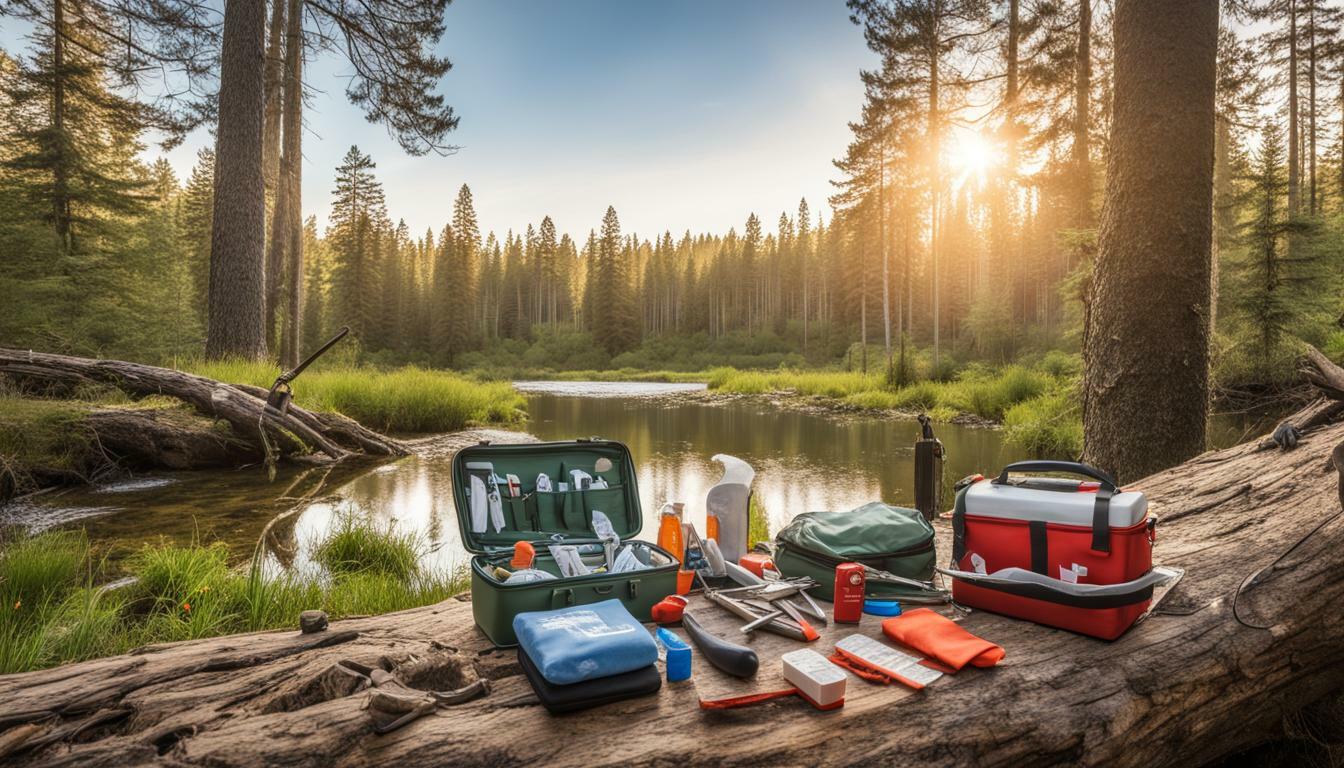If you’re planning to volunteer for ecological restoration projects, it’s essential to prioritize safety. Whether you’re working to preserve natural habitats, plant trees, or clean up litter, the environment can present unique hazards that require specific first aid equipment and supplies. This is why having a well-equipped first aid kit designed for nature conservation is crucial for both your well-being and the environment.
First aid kits for ecological restoration volunteers should include supplies to treat common injuries and emergencies that may arise during outdoor activities. These kits help to prepare you for unexpected situations in remote or hazardous environments, ensuring that you can provide prompt assistance to yourself or fellow volunteers.
Whether you’re new to eco-volunteering or a seasoned veteran, it’s crucial to understand the importance of nature safety and how first aid can help you maintain it. In this article, we’ll explore the essentials of nature conservation first aid, discuss the significance of eco-volunteer safety, and provide a comprehensive checklist for a nature restoration safety kit. So, let’s dive in!
Key Takeaways:
- First aid kits for ecological restoration volunteers are essential for nature safety.
- These kits help prepare volunteers for unexpected situations in remote or hazardous environments.
- Nature safety is crucial for the well-being of both volunteers and the environment.
The Importance of Nature Safety in Ecological Restoration
Ecological restoration is an essential activity that helps to maintain and improve the health of our natural environments. However, it can be a hazardous undertaking, and volunteers involved in these projects must take precautions to ensure their safety. Nature safety is a critical aspect of ecological restoration, and volunteers must be prepared for potential emergencies and injuries that may arise during their work.
First aid is a crucial element of nature safety in ecological restoration. In the event of an injury, prompt and effective treatment can make all the difference to the recovery of the injured party. First aid kits specifically designed for these situations are essential for ensuring the well-being of both volunteers and the environment.
In order to maintain nature safety, volunteers need to understand the unique challenges that they may encounter in natural environments. Hazards such as uneven terrain, unpredictable weather conditions, and exposure to wildlife require careful planning and preparation. This level of attention to detail is critical to prevent accidents and ensure a successful ecological restoration project.
Overall, nature safety must be a top priority for volunteers involved in ecological restoration. A well-equipped first aid kit, as well as appropriate safety gear, are essential components of any eco-volunteer’s emergency preparedness. By understanding the importance of nature safety and being fully prepared for potential emergencies, volunteers can effectively contribute to the preservation and restoration of our natural environments.
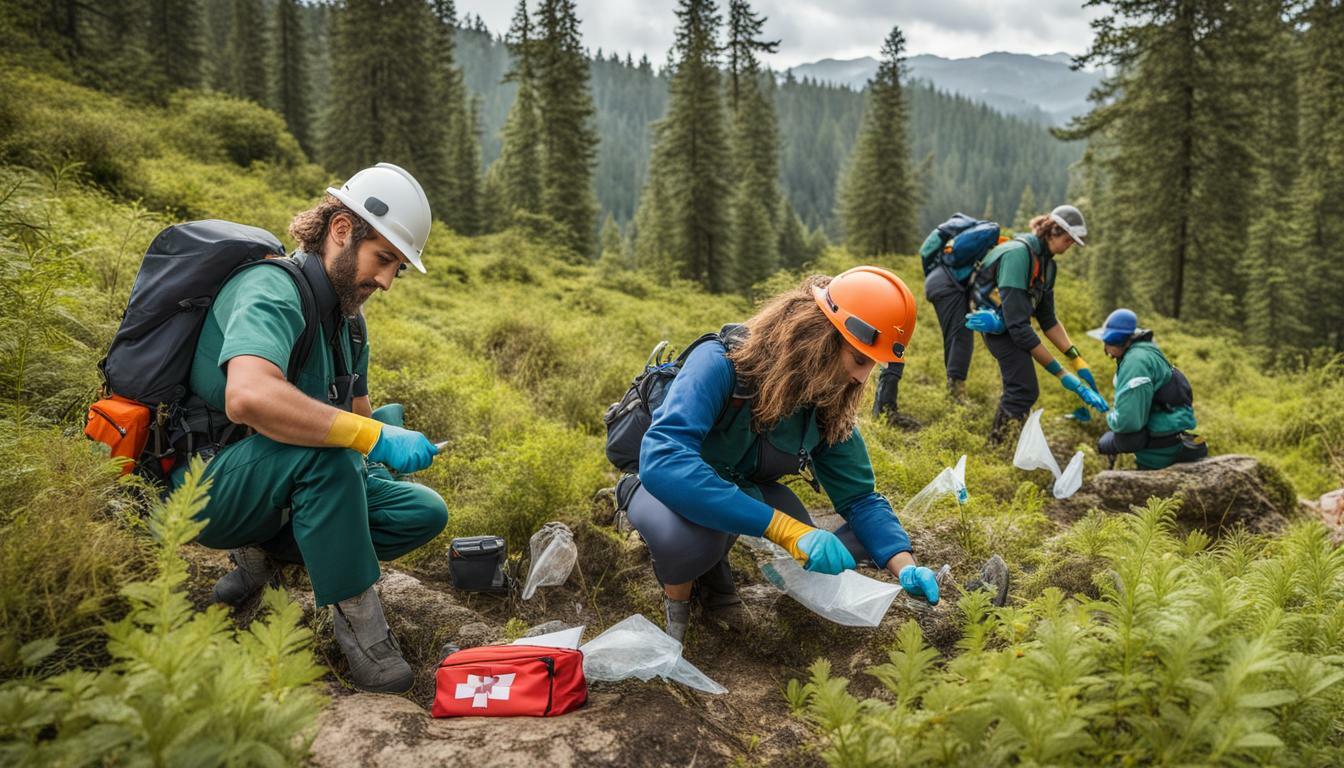
Understanding Nature Conservation First Aid
When it comes to ecological restoration, first aid takes on a whole new level of importance. Traditional first aid practices may not be enough to address the unique challenges that volunteers face when working in natural environments. This is where nature conservation first aid comes in.
Nature conservation first aid is specifically tailored to address the types of injuries and emergencies that can occur during ecological restoration projects. It takes into account the unique environmental conditions and the potential impact on both the volunteers and the environment.
One of the key challenges of nature conservation first aid is dealing with remote locations. In some cases, volunteers may be working in areas that are difficult to access, which can hinder the ability to quickly get professional medical help. In these situations, it’s important for volunteers to have the right first aid supplies and training to effectively respond to emergencies.
Another challenge of nature conservation first aid is dealing with the local flora and fauna. Volunteers may encounter poisonous plants or venomous animals while working in natural environments, and it’s important to be prepared to address these situations. Additionally, it’s important to consider the impact of first aid practices on the environment and to use sustainable and environmentally-friendly techniques wherever possible.

So what should be included in a nature conservation first aid kit? It’s important to have the basics, such as bandages, antiseptic creams, and pain relief medication. However, it’s also important to have supplies specific to natural environments, such as insect repellent, sting relief, and poison ivy treatment. Having a first aid manual tailored to nature conservation can also be helpful.
Overall, nature conservation first aid is an essential component of any ecological restoration project. By being prepared with the right supplies and training, volunteers can help ensure their own safety and the safety of the environment.
Eco-Volunteer Safety and First Aid Preparedness
Ecological restoration projects can be both physically and mentally challenging for volunteers. From exposure to harsh weather conditions to accidents and injuries, eco-volunteers need to be prepared for all eventualities. One of the most important aspects of preparedness is having a well-equipped first aid kit on hand. A first aid kit can help to quickly treat injuries and prevent them from worsening.
When it comes to eco-volunteer safety, having a first aid kit is just one piece of the puzzle. It is also important for volunteers to educate themselves on basic first aid techniques and safety protocols. By doing so, they can respond quickly and effectively in an emergency situation, and potentially prevent further harm.
One way to promote eco-volunteer safety is to provide training and education on first aid techniques. Volunteers can be encouraged to attend first aid courses and certifications, which can in turn promote a culture of safety within the restoration community. A culture of safety can help to reduce the risk of accidents and injuries, and can also foster a sense of community and support among volunteers.
In addition to education, eco-volunteers should also have access to safety gear, such as gloves, goggles, and sturdy footwear. These items can protect volunteers against potential hazards, and minimize the risk of injury.
Overall, by prioritizing safety and first aid preparedness, eco-volunteers can ensure that they are well-equipped to handle any challenges that may arise during ecological restoration projects. They can also work to establish a culture of safety within the wider community, promoting the health and wellbeing of both volunteers and the environment.
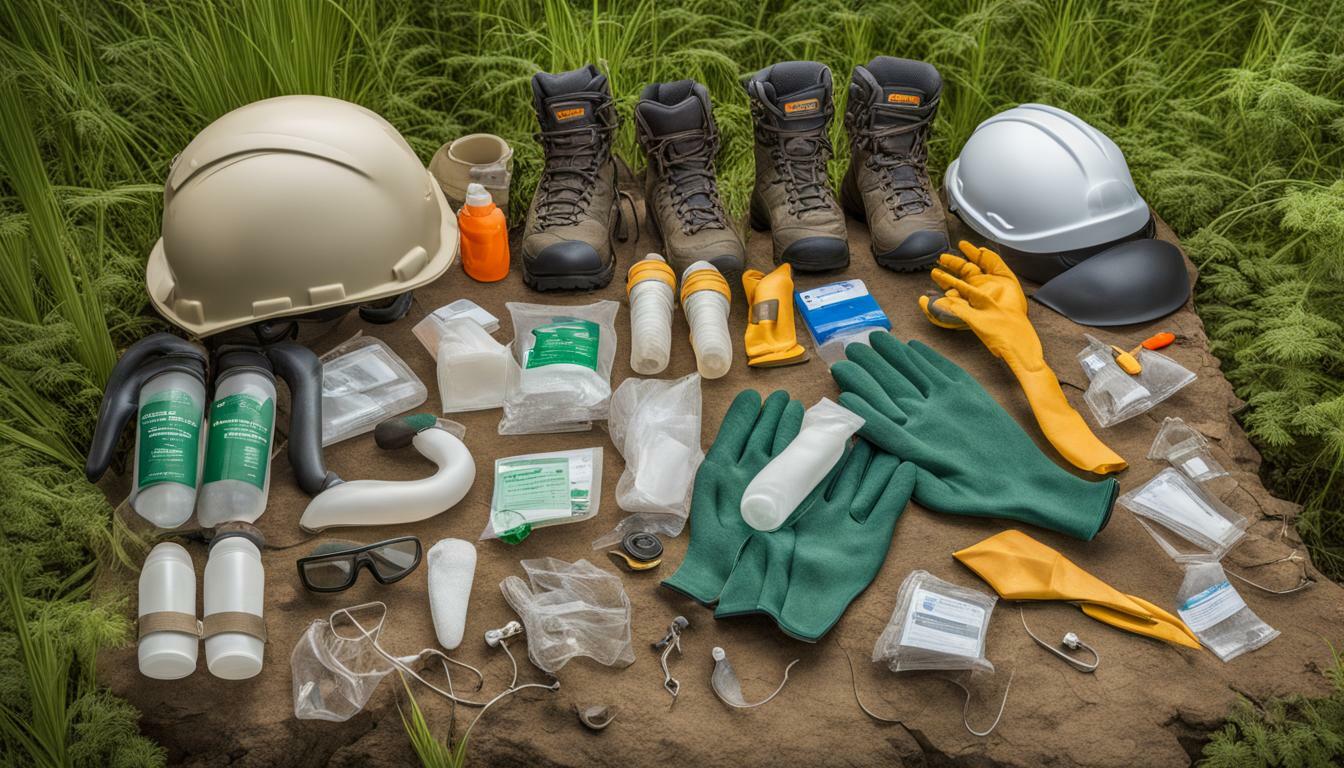
Essential Ecological Restoration Supplies for First Aid
When participating in ecological restoration projects, having a well-equipped first aid kit is crucial for ensuring nature safety. Here are some of the essential first aid supplies that should be included in a kit for ecological restoration volunteers:
| Supplies | Description |
|---|---|
| Bandages | For covering wounds and controlling bleeding |
| Antiseptic Creams | For preventing infections in cuts and scrapes |
| Insect Repellent | For keeping insects and other pests at bay |
| Tweezers | For removing splinters and ticks |
| Scissors | For cutting tape and bandages |
| Gauze Pads | For covering large wounds and burns |
| Thermometer | For monitoring body temperature |
| Gloves | For protecting hands during emergencies |
These supplies will enable volunteers to respond effectively to potential injuries and emergencies that may occur while working in natural environments. By including items like insect repellent and tweezers, volunteers can also protect themselves from common hazards like insect bites and splinters.
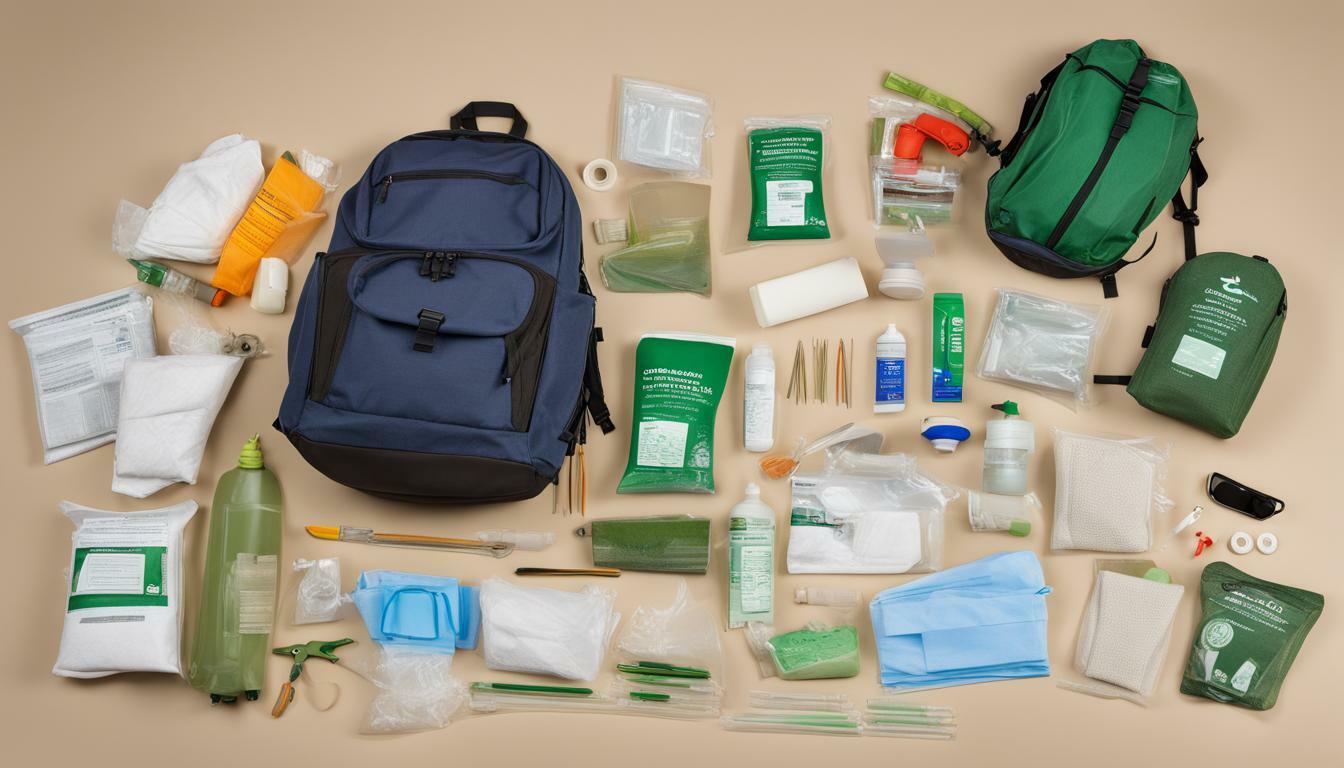
Properly equipping a first aid kit for ecological restoration projects ensures that volunteers are prepared for any situation that may arise.
Environmental Volunteer Safety Gear
When it comes to ecological restoration, safety gear is just as important as having a first aid kit. Eco-volunteers often work in rugged, natural environments where they may encounter sharp tools, poisonous plants, and rough terrain. It is crucial to protect themselves from potential injuries by wearing appropriate safety gear.
Personal protective equipment (PPE) is essential to ensure the safety of eco-volunteers. Gloves, goggles, and sturdy footwear are some of the items of PPE that should be included in a volunteer’s first aid kit. Gloves protect the hands from cuts and scratches, and goggles protect the eyes from debris. Sturdy footwear provides support and helps prevent slips and falls.
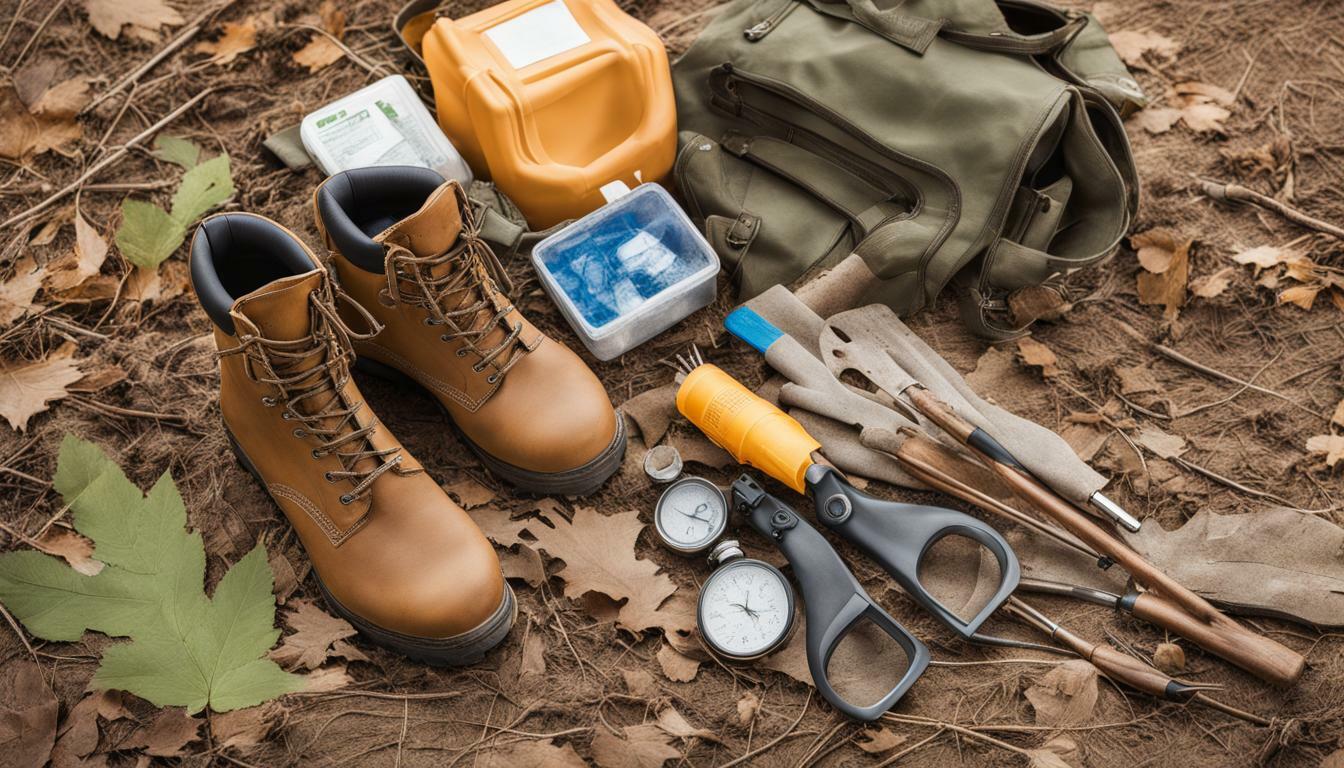
Additionally, volunteers should pack a hat and long-sleeved clothes to protect themselves from the sun, poisonous plants, and bugs. Clothing made from synthetic fabrics is preferable over cotton, as it dries faster and is less susceptible to insect bites.
Aside from its protective function, PPE is also an essential component of a volunteer’s emergency preparedness. In case of an emergency, having the right safety gear can make all the difference in preventing serious injuries.
Sustainable Restoration First Aid Practices
When administering first aid in natural environments, it is essential to consider the impact on the surrounding ecosystem. Sustainable restoration first aid involves using methods that are both effective and environmentally friendly.
One sustainable practice is to use natural remedies for common injuries such as cuts, scrapes, and insect bites. For example, a mixture of honey and turmeric can be used as a natural antiseptic, and crushed garlic can be applied to alleviate pain and swelling.
Another aspect of sustainable restoration first aid is the use of biodegradable materials. For instance, traditional wound dressings can be replaced with biodegradable alternatives such as bamboo fibre or animal-based bandages. This reduces the amount of waste produced and minimizes the impact on the surrounding environment.

It is also important to consider the disposal of any medical waste. All materials should be properly disposed of, and any hazardous waste, such as needles or medication containers, should be collected separately for safe disposal.
By adopting sustainable restoration first aid practices, volunteers can effectively provide first aid while minimizing their impact on the environment.
Nature Restoration Safety Kit Checklist
A well-stocked first aid kit is essential for any ecological restoration volunteer. Being prepared for potential emergencies and injuries can help ensure the safety of both volunteers and the environment. Here is a checklist of essential items that should be included in a nature restoration safety kit:
| First Aid Supplies | Environmental Safety Gear |
|---|---|
|
|
Organizing and maintaining your nature restoration safety kit is crucial for optimal use. Make sure your supplies are kept clean, dry, and up-to-date. Check expiration dates regularly and replace any items as needed. Keep your kit in a waterproof container and easily accessible.

By having a well-stocked nature restoration safety kit and following proper safety protocols, you can help protect both yourself and the environment while participating in ecological restoration projects.
Training and Education for Eco-Volunteers
Training and education are essential components of ensuring eco-volunteer safety. By educating themselves on first aid techniques and safety protocols, volunteers can better prepare themselves to respond effectively in emergency situations.
There are a variety of resources available to eco-volunteers seeking training and education. Organizations such as the British Red Cross and St John Ambulance offer first aid courses specifically tailored to the unique challenges of natural environments. Additionally, there are a wealth of online resources and certifications available for those unable to attend in-person training sessions.
Eco-volunteers should also take advantage of opportunities to learn about the specific environments and ecosystems they will be working in. This may involve attending workshops, consulting with experts in the field, and familiarizing oneself with local flora and fauna.
Ultimately, a commitment to ongoing education and training is crucial to ensuring the safety of both volunteers and the natural environments they seek to restore.
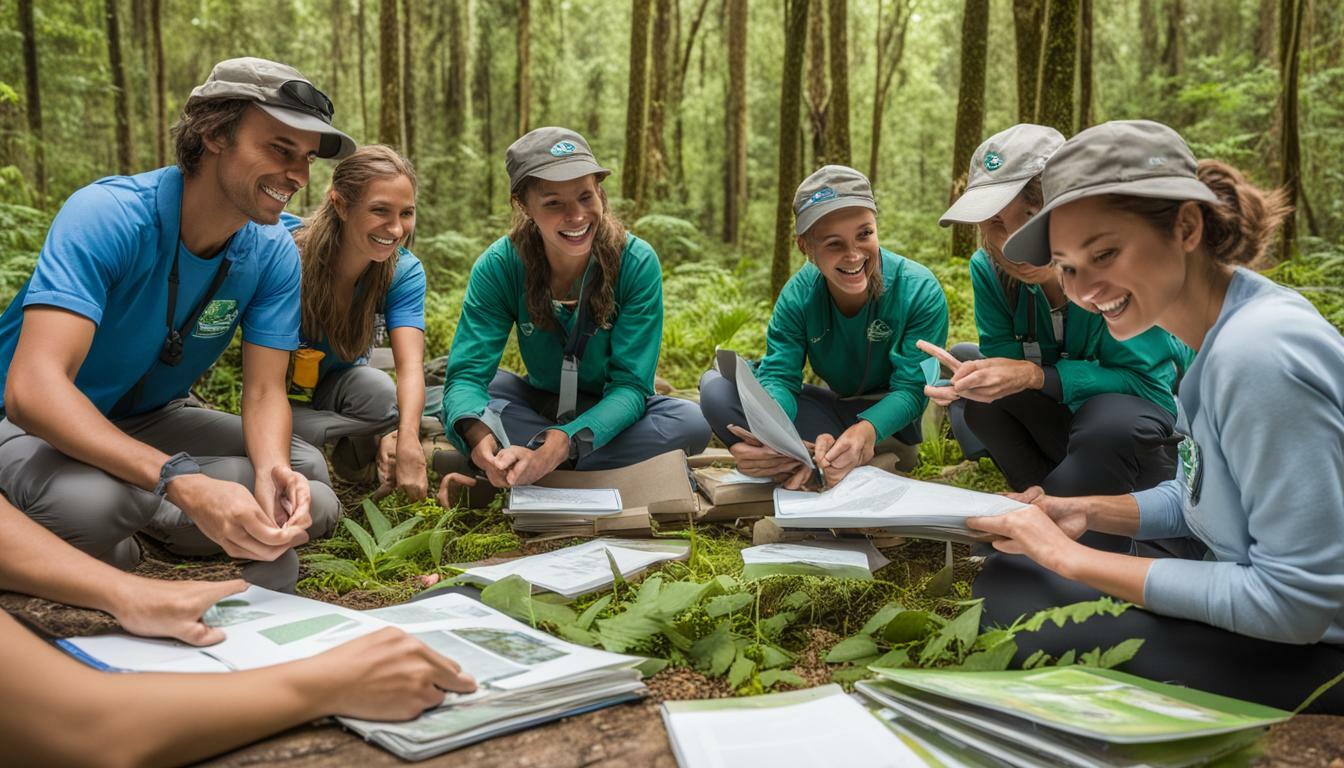
Promoting a Culture of Safety in Ecological Restoration
Ecological restoration is an important and rewarding activity, but it can also be dangerous if proper safety protocols are not followed. That’s why it’s essential to promote a culture of safety among eco-volunteers and make sure everyone is aware of potential hazards and how to prevent them. By prioritising safety, we can ensure that our restoration projects are successful while also protecting the well-being of volunteers and the environment.
One way to promote a culture of safety is to encourage open communication about safety concerns. Volunteers should feel comfortable reporting any potential hazards or incidents to their team leaders and discussing ways to prevent them in the future. This can help prevent accidents from occurring and ensure that everyone is on the same page when it comes to safety practices.
Another important aspect of promoting safety in ecological restoration is providing adequate training and education on first aid and safety protocols. Volunteers should be informed of how to properly use safety gear and first aid supplies and educated on the best practices for staying safe in natural environments. By providing resources and training, we can equip volunteers with the knowledge and skills to handle potential safety hazards.
Of course, one of the easiest ways to promote a culture of safety is by providing well-equipped first aid kits and safety gear. Having access to the right supplies and equipment can make all the difference in preventing accidents and responding quickly in the event of an emergency. Volunteers should always have access to a nature restoration safety kit that includes all the necessary supplies and gear, such as bandages, gloves, insect repellent, goggles, and sturdy footwear.
Overall, promoting a culture of safety is essential for the success of ecological restoration projects. By prioritising safety, we can ensure that our volunteers are protected and that our natural environments are preserved for generations to come.
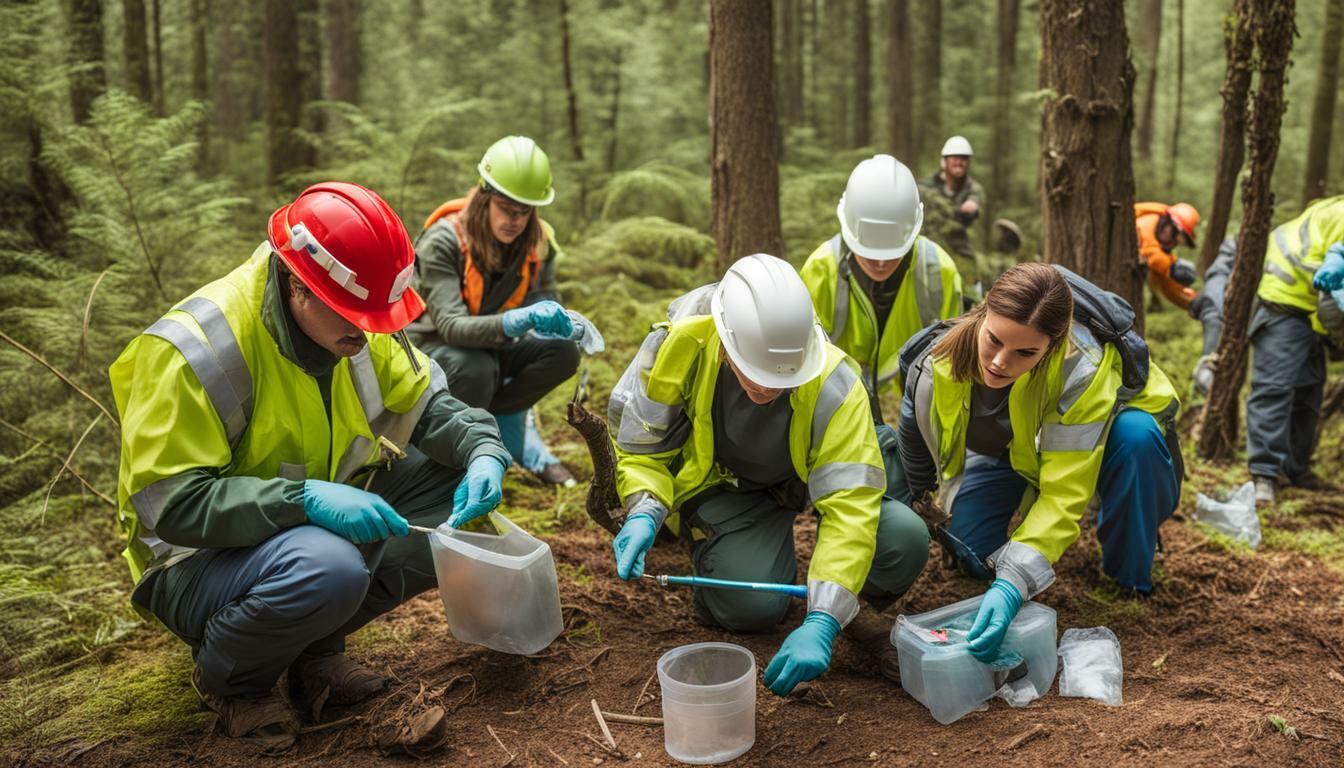
The Future of First Aid in Ecological Restoration
As ecological restoration projects continue to gain momentum, the importance of first aid for volunteers working in these environments cannot be overstated. The future of first aid in ecological restoration will likely see a combination of traditional practices with emerging technologies and techniques that enhance nature safety.
One area where technology may play a role is in the development of first aid apps. These apps have the potential to provide comprehensive information on first aid techniques that are tailored to the specific needs of ecological restoration volunteers. They can also include features such as GPS tracking and emergency alerts to provide real-time support during an emergency.
Another area where advancements may occur is in the development of sustainable first aid practices. As more people become environmentally conscious, there is a growing need for eco-friendly first aid supplies and techniques. This may include the use of biodegradable bandages, natural remedies, and other sustainable approaches to first aid.
The future of first aid in ecological restoration will also likely see an increased emphasis on preventative measures. This may include training volunteers on how to identify potential hazards and avoid accidents before they occur. It may also involve the development of safety protocols that are specific to the unique challenges of ecological restoration projects.
As the field of ecological restoration continues to grow, so too will the need for effective first aid practices. By incorporating emerging technologies and sustainable practices, we can ensure that volunteers are well-equipped to handle emergencies while also protecting the environment they are working to restore.
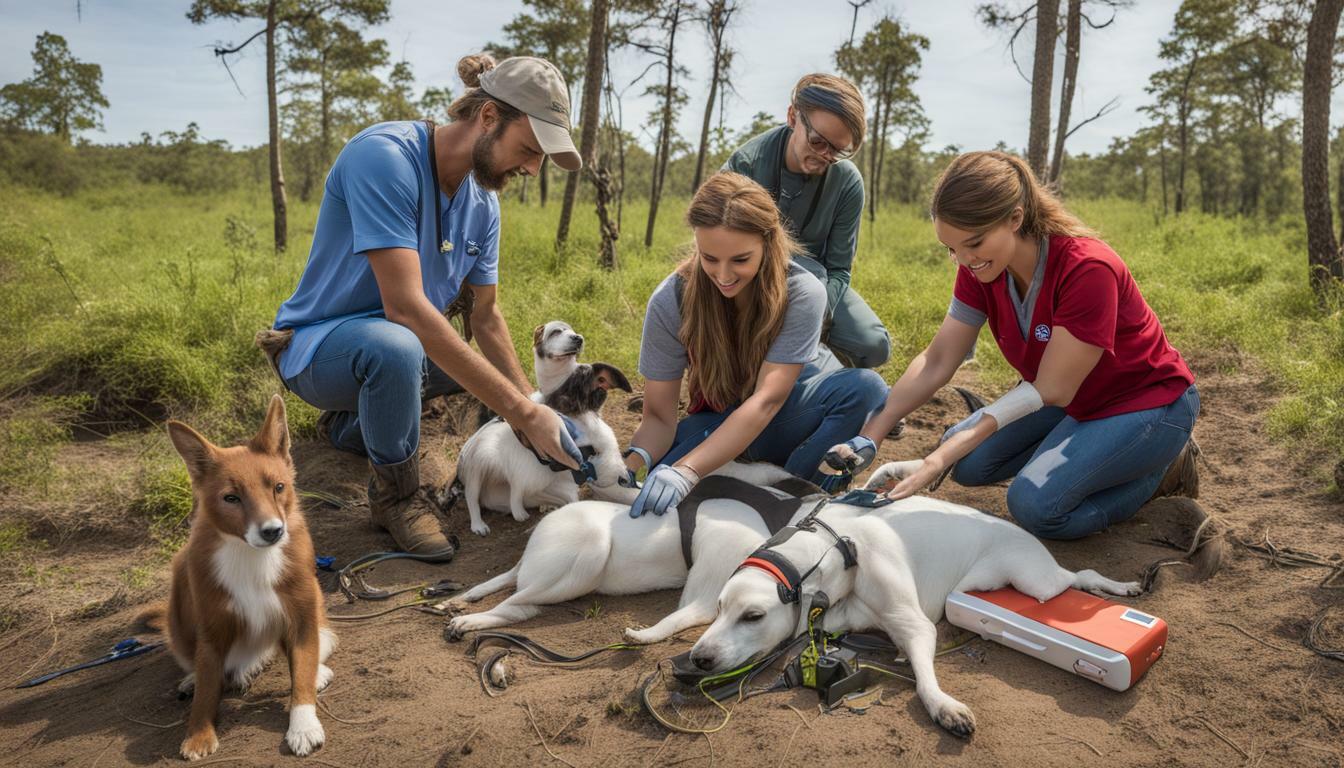
Conclusion
Ecological restoration projects can be incredibly rewarding and beneficial for both the environment and the volunteers involved. However, it’s crucial to prioritize nature safety and be prepared for potential emergencies and injuries that may arise during the work. This is where first aid kits specifically designed for eco-volunteers come in.
By having a well-equipped nature conservation first aid kit and personal protective equipment, volunteers can enhance their safety and respond effectively to emergencies. It’s also essential for volunteers to educate themselves on first aid techniques and safety protocols to enhance their effectiveness in ecological restoration projects.
Promoting a culture of safety among volunteers is crucial. Encouraging open communication and promoting safe practices can ensure the well-being of both volunteers and the environment. As the field of ecological restoration continues to evolve, there is potential for advancements and innovations in first aid practices to further enhance nature safety in the future.
Overall, first aid kits for ecological restoration volunteers are essential for promoting nature safety and ensuring the success of these important projects. Let’s prioritize safety and continue to work towards a healthier and more sustainable environment.
